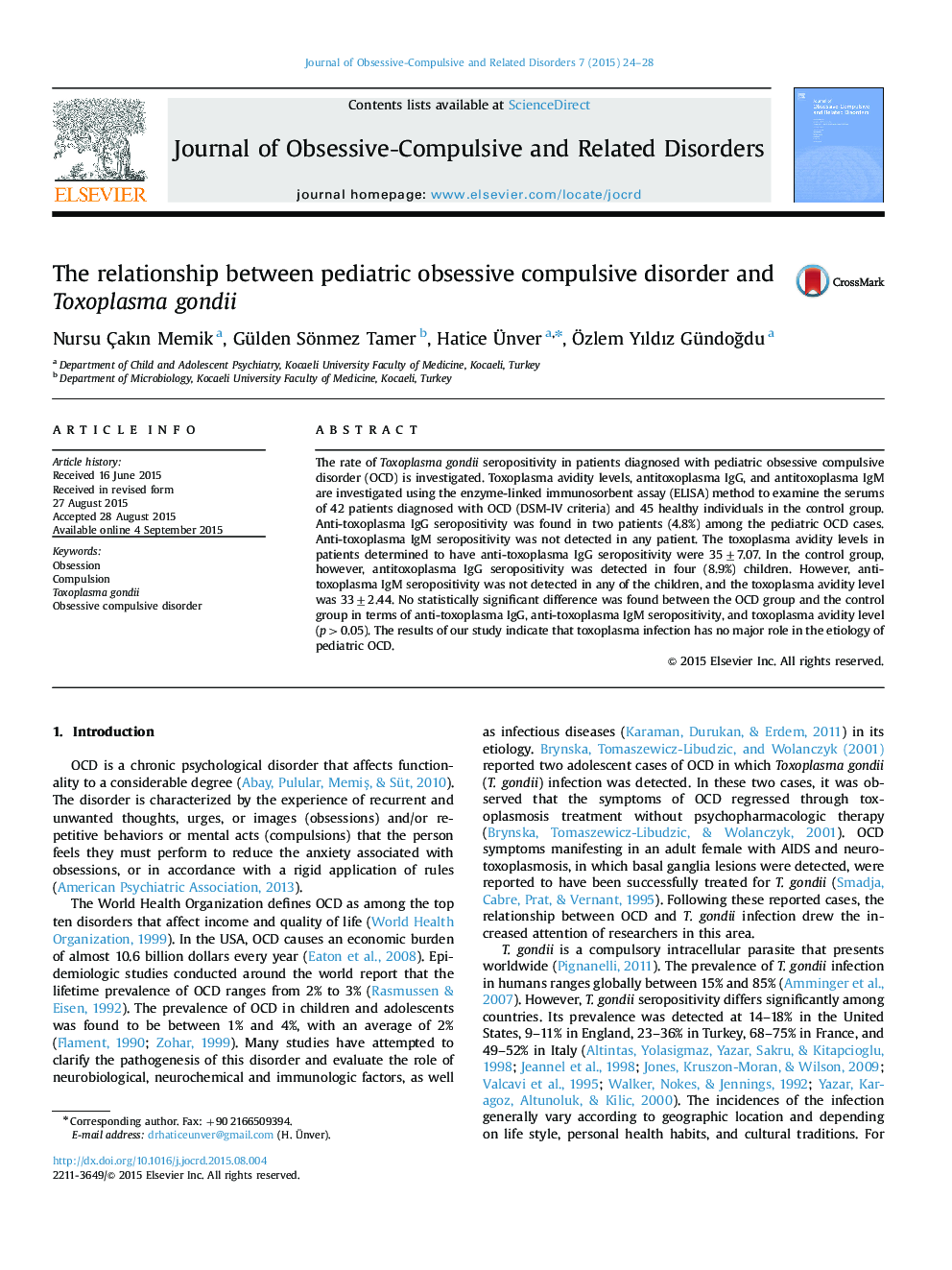| Article ID | Journal | Published Year | Pages | File Type |
|---|---|---|---|---|
| 912212 | Journal of Obsessive-Compulsive and Related Disorders | 2015 | 5 Pages |
•The rate of Toxoplasma gondii seropositivity in patients diagnosed with pediatric OCD is investigated.•Toxoplasma levels are investigated using the enzyme-linked immunosorbent assay (ELISA) method in the serums.•The OCD group comprised 42 children, whereas the control group consisted of 45 children.•No differences were found in seropositivity between the control group and the pediatric OCD patients.
The rate of Toxoplasma gondii seropositivity in patients diagnosed with pediatric obsessive compulsive disorder (OCD) is investigated. Toxoplasma avidity levels, antitoxoplasma IgG, and antitoxoplasma IgM are investigated using the enzyme-linked immunosorbent assay (ELISA) method to examine the serums of 42 patients diagnosed with OCD (DSM-IV criteria) and 45 healthy individuals in the control group. Anti-toxoplasma IgG seropositivity was found in two patients (4.8%) among the pediatric OCD cases. Anti-toxoplasma IgM seropositivity was not detected in any patient. The toxoplasma avidity levels in patients determined to have anti-toxoplasma IgG seropositivity were 35±7.07. In the control group, however, antitoxoplasma IgG seropositivity was detected in four (8.9%) children. However, antitoxoplasma IgM seropositivity was not detected in any of the children, and the toxoplasma avidity level was 33±2.44. No statistically significant difference was found between the OCD group and the control group in terms of anti-toxoplasma IgG, anti-toxoplasma IgM seropositivity, and toxoplasma avidity level (p>0.05). The results of our study indicate that toxoplasma infection has no major role in the etiology of pediatric OCD.
